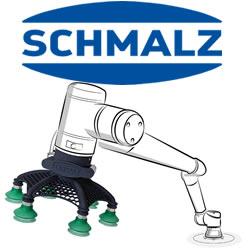How Open-Source Robotics Hardware Is Accelerating Research and Innovation
Drone Use Will Skyrocket By 2021, Government Says
Drone Defense Startups Flock to the Rescue
First Robot Cop to join Dubai Police Force in May
How Sensors, Robotics And Artificial Intelligence Will Transform Agriculture
Perceptual Robotics, Autonomous wind turbine inspection
America may miss out on the next industrial revolution
New Study Shows U.S. is World Leader in Robotics Automation - With $732 Billion of Robots
ABB sells its first ever robot manufactured in the US to Hitachi Powdered Metals USA
Grocery 4.0: Ocado reshapes retail with robotics and automation
Are Robotics a Key to the Next Phase of Recycling?
Crashing Drones Into Test Dummies for Safety
Miso Robotics Unveils "Flippy" in CaliBurger Kitchen, Plans Worldwide Rollout
Rise of the Robots
Brain-controlled robots
Records 766 to 780 of 1461
First | Previous | Next | Last
Featured Product

